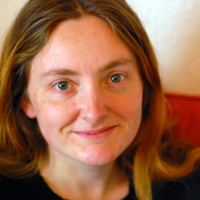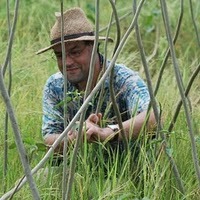Weber, T., McPhee, M.J. and Anderssen, R.S. (eds) MODSIM2015, 21st International Congress on Modelling and Simulation, 2015
The last few years have seen an increasing interest in the development of high throughput phenoty... more The last few years have seen an increasing interest in the development of high throughput phenotyping platforms (HTP) that allow the automated measurement of plant growth and structure. These platforms have utilised various imaging technologies, including fluorescence imaging, thermal imaging, and visible imaging. Since plants are structurally complex and inherently three-dimensional (3D), 3D imaging and reconstruction approaches have distinct advantages over 2D imaging when it comes to quantifying structural information (such as leaf angle distribution, leaf area etc.). High throughput phenotyping platforms, when combined with 3D image analysis, enable researchers to investigate complex functional traits related to plant structure, including responses to external and internal signals or perturbations. Moreover, image-based reconstruction techniques are able to produce complex structural models of both large and small individual plants, which retain colour information and are topologically coherent. In this paper, we present a computational workflow for analysing the growth of Arabidopsis thaliana rosettes over time using stereo reconstruction. Stereo reconstruction for plant phenotyping generally includes data collection and point cloud generation. In our approach, we not only use stereo image pairs to generate point clouds of the plants but also reconstruct mesh surfaces for further analysis. By applying a semi-global matching algorithm, 2.5D point clouds of Arabidopsis growing in trays with multiple plants were generated. Point clouds were then filtered and segmented in order to isolate single plants using clustering methods. A variety of surface reconstruction methods were then used to generate meshes from the point clouds. These meshes were analysed to quantify the plant dimensions and surface area in three dimensions. The segmentation was stable over time and was used to generate a time series for the growth of the individual plants over time. The advantages of such a stereo reconstruction system are: i) the system is able to construct realistic point clouds and meshes of the scene, ii) the processing pipeline is computationally efficient, iii) it allows stereo reconstruction and segmentation of individual plants in trays of 20 plants each for high throughput analysis. The overall approach proved useful in quantifying morphometric parameters in 3D for a set of Arabidopsis accessions and relating plant structure to plant function.










Uploads
Papers by Robert Furbank